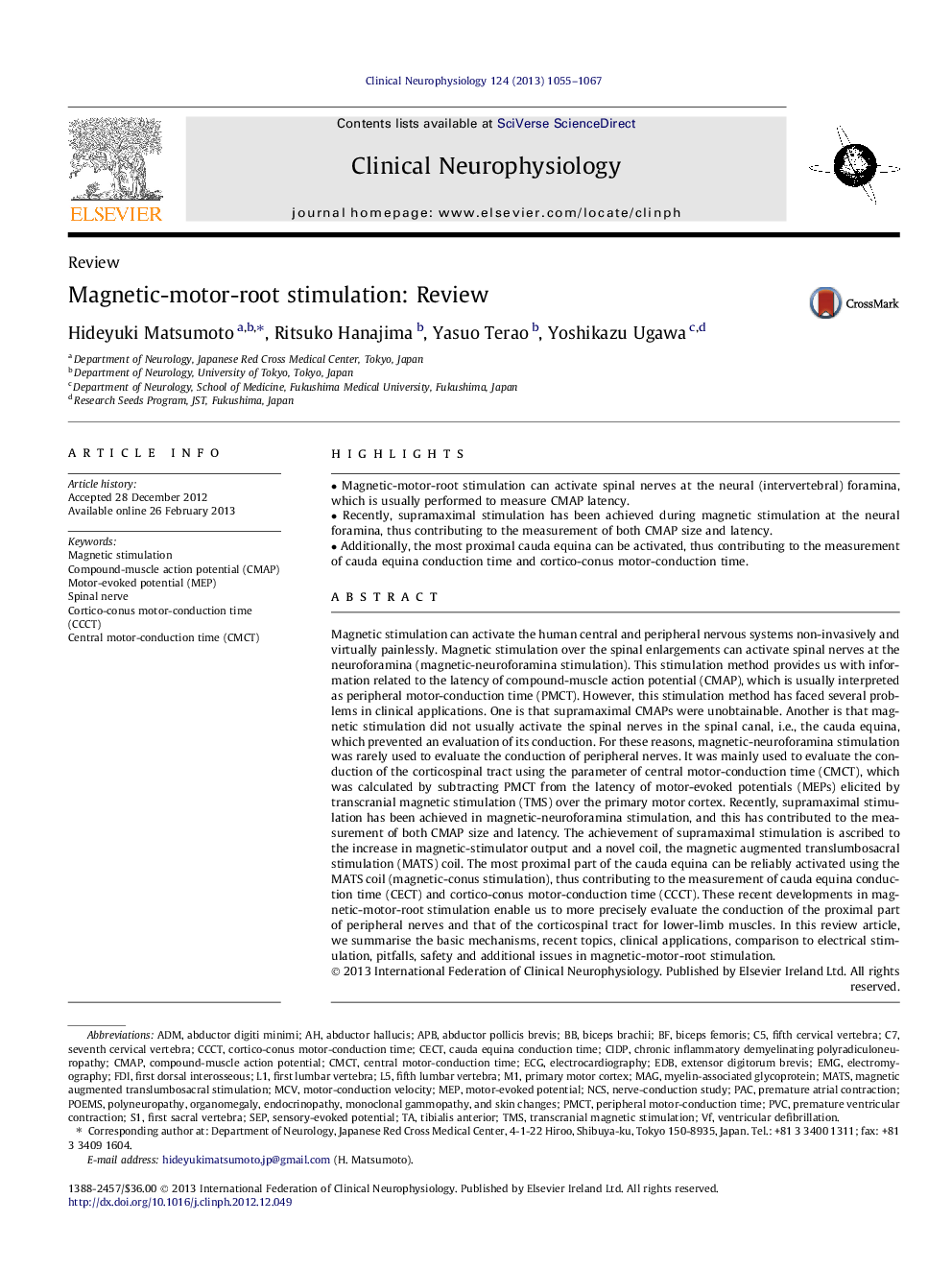| Article ID | Journal | Published Year | Pages | File Type |
|---|---|---|---|---|
| 3043860 | Clinical Neurophysiology | 2013 | 13 Pages |
Magnetic stimulation can activate the human central and peripheral nervous systems non-invasively and virtually painlessly. Magnetic stimulation over the spinal enlargements can activate spinal nerves at the neuroforamina (magnetic-neuroforamina stimulation). This stimulation method provides us with information related to the latency of compound-muscle action potential (CMAP), which is usually interpreted as peripheral motor-conduction time (PMCT). However, this stimulation method has faced several problems in clinical applications. One is that supramaximal CMAPs were unobtainable. Another is that magnetic stimulation did not usually activate the spinal nerves in the spinal canal, i.e., the cauda equina, which prevented an evaluation of its conduction. For these reasons, magnetic-neuroforamina stimulation was rarely used to evaluate the conduction of peripheral nerves. It was mainly used to evaluate the conduction of the corticospinal tract using the parameter of central motor-conduction time (CMCT), which was calculated by subtracting PMCT from the latency of motor-evoked potentials (MEPs) elicited by transcranial magnetic stimulation (TMS) over the primary motor cortex. Recently, supramaximal stimulation has been achieved in magnetic-neuroforamina stimulation, and this has contributed to the measurement of both CMAP size and latency. The achievement of supramaximal stimulation is ascribed to the increase in magnetic-stimulator output and a novel coil, the magnetic augmented translumbosacral stimulation (MATS) coil. The most proximal part of the cauda equina can be reliably activated using the MATS coil (magnetic-conus stimulation), thus contributing to the measurement of cauda equina conduction time (CECT) and cortico-conus motor-conduction time (CCCT). These recent developments in magnetic-motor-root stimulation enable us to more precisely evaluate the conduction of the proximal part of peripheral nerves and that of the corticospinal tract for lower-limb muscles. In this review article, we summarise the basic mechanisms, recent topics, clinical applications, comparison to electrical stimulation, pitfalls, safety and additional issues in magnetic-motor-root stimulation.
► Magnetic-motor-root stimulation can activate spinal nerves at the neural (intervertebral) foramina, which is usually performed to measure CMAP latency. ► Recently, supramaximal stimulation has been achieved during magnetic stimulation at the neural foramina, thus contributing to the measurement of both CMAP size and latency. ► Additionally, the most proximal cauda equina can be activated, thus contributing to the measurement of cauda equina conduction time and cortico-conus motor-conduction time.
